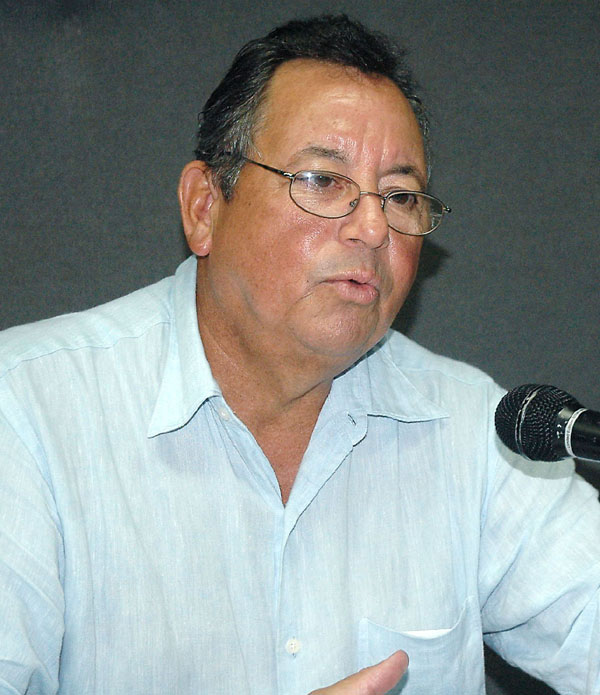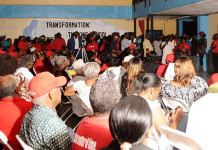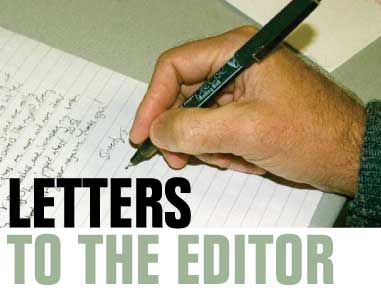A BP Sunday SPECIAL!

By ADRIAN GIBSON
#ajbahama@hotmail.com
WHENEVER I read, hear or watch a news story where former Progressive Liberal Party Cabinet minister and Exuma MP George Smith is an uncompromising purveyor of political ethics, I always have flashbacks to 1984.
That was the year of the report of the Commission of Inquiry appointed to look into the illegal use of the Bahamas for the transhipment of dangerous drugs destined for the United States and of the condemnatory utterances of commissioners relative to Mr Smith and their conclusion that he “corruptly accepted funds from known drug smugglers”.
Interestingly, in a story in The Tribune last week, Mr Smith was empathetic toward the circumstances surrounding State Minister for Legal Affairs Damian Gomez’s resignation from Cabinet, but stressed that politicians should not be motivated by money. It was revealed that week that Mr Gomez had tendered his resignation from Cabinet due to financial reasons.
According to that report, Mr Smith insisted that the salary of a minister was not intended to supplement private income but to serve Bahamians who need representation in the House of Assembly.
Mr Smith reportedly said: “However I will say that politics is a service. If you are motivated by how much money you are going to get out of it you really shouldn’t go into it. Indeed, back in my time the small salaries were for the devoted people. It was an indication of the level of service to the Bahamian people. It’s simple, we’ve just got to stop talking about the salaries of politicians … The House of Assembly salary is paid to you so you can use it to service the people. It is not intended to supplement your private income.”
As a student of history, I found Mr Smith’s statement laughable and thought that this is yet another example of where it is impossible to listen to the message when we may not have the best suited messenger. Considering the Commission’s report, I do not know if Mr Smith sees the irony in him making such statements. I believe that Bahamians ought to be reminded of some of the major happenings in our nation’s history – and one such is the Commission of Inquiry 31 years ago.
In 1984, the year I was born, George Smith was serving in the Pindling Cabinet as the Minister of Agriculture, Fisheries and Local Government. In the introduction to their chapter on Mr Smith, the Commissioners wrote:
“Evidence was heard regarding two possible areas of corruption on the part of Mr Smith. The first matter concerned the purchase of a BMW car in the Minister’s name by the Lehder organisation and the subsequent purchase of a similar BMW car by the Minister himself. The second area of concern resulted from the evidence of Edward Ward, a drug smuggler, to the effect that he paid the Minister $100,000 through Mr Everette Bannister for the purpose of having the names of Ward and his wife removed from the Immigration ‘Stop List’.”
According to the report, Norman’s Cay – which was in the constituency of Mr Smith and the base of notorious drug smuggler Carlos Lehder – was “visited on numerous occasions” by Mr Smith, who stated that he visited the Cay “primarily in his capacity as the local MP for the area”.
According to the Commissioner’s report: “(Mr Smith) stated that sometime during 1978, while at a social function, he was approached by Mr Ian Davidson, the manager of the Guardian Trust Company Ltd, who said he represented a wealthy client who had acquired sections of Norman’s Cay for the purpose of developing a resort complex. The Minister was invited by Davidson to meet his client and, subsequently, a luncheon was arranged where the Minister met Carlos Lehder. Mr Smith said that he was favourably impressed by Lehder and his plans to develop Norman’s Cay and he accepted Lehder’s invitation to visit the Cay. A few weeks later, the visit was arranged and the Minister remained there overnight.”
What’s more, though he could only recall meeting Mr Lehder on two other occasions, one witness – who gave evidence in camera – told the Commission that he had witnessed Mr Smith being ferried between Norman’s Cay and Highbourne Cay on April 8, 1979, on a helicopter that he was familiar with and “associated it with Carlos Lehder”.
#According to the Commission’s report, when Mr Smith first appeared before it on December, 9, 1983, he “made no mention of a BMW car that had been delivered to him as a gift from the Lehder organisation and which had been returned to the donor”.
#“Evidence was introduced indicating that this car was purchased from Vista Motor Co, of 700 North Federal Highway, Pompano Beach, Florida on 20th April, 1979. The purchaser was shown on the retail buyer’s order as ‘Carlos Hoyos – George Smith.’ It was described as a 1979 BMW sedan, type 733ia, identification number IB 5786626, cashmere colour. Cash receipt number 3659 for $26,000 was issued in favour of George Smith. The vehicle was shipped to Nassau by Inter-Marketing Cargo Service, Miami, Florida. The exporter and the ultimate consignee were shown as consignor and consignee …” the report states.
According to the Commissioner’s report, the vehicle was cleared through customs by the late Roland Cartwright on the instructions of Ian Davidson, who told Mr Cartwright to license and insure the BMW in the name ‘George A Smith.’ The duty on the vehicle was assessed at $13,500 and was paid by Davidson. Once cleared, the Commission was told by Idris Reid, the Permanent Secretary of Mr Smith’s ministry, that an American Caucasian by the name of Chuck had parked the car on West Bay Street and left him with the keys for Mr Smith.
Mr Reid told the Commissioners that when Mr Smith returned to his office later that day, he purportedly expressed surprise and took the keys into his possession. However, Mr Reid testified that either the same day or the next day, after some consideration, Mr Smith returned the car keys to him and instructed him to give the keys back to the person who had brought them.
Of course, somehow the person who delivered the keys was somehow found (though they were only known as Chuck) and Mr Cartwright, the customs broker, testified that he was instructed by Mr Davidson to ship the BMW back to the States. The BMW eventually ended up in Colombia, where it was consigned to Giullermo Lehder.
Mr Smith, in a second appearance before the Commission on June 20, 1984, told the Commissioners that he “understood someone was offering him a car and that it came from Norman’s Cay”.
They said: “He did not agree that in all probability it was a gift from Lehder. The Minister stated that he did not talk to anyone before returning the keys and he did so because he thought it was the proper thing to do. He claimed that it did not occur to him immediately that the vehicle was offered as a bribe and he said he did not know Carlos Hoyos. It was suggested to Mr Smith that if he was being frank with the Commission, he would have mentioned this particular vehicle being offered to him as a gift when he first gave evidence. According to him, the reason he did not was because he was not asked about it.”
The issue of a second BMW arose and, when the Commissioners questioned Mr Smith about his purchase of the BMW, he gave evidence that he purchased it in Miami on June 4, 1979, for his intended wife. This purchase would have come two months after the purchase of the first BMW. According to Mr Smith, he paid for the car “from his own financial resources, partly from cash on hand, partly from the sale of an apartment and partly from monies borrowed”.
“He stated that he borrowed the major portion of the money from a friend and relative. He said he was sure that the individual would be prepared to state that fact, although that person’s recollection of the precise amount might differ from the Minister’s. In answer to the question, “But your recollection at the moment is that the monies that you took were in cash largely borrowed from a cousin, Lester Smith, right?” the Minister did not reply directly but said “Might I add, sir, it is a practice that continues today,” the Commission wrote.
Mr Reid testified that whilst he was there with Mr Smith and his then bride-to-be, he drove them to the Volkswagen South car dealership and that he hadn’t seen any monies changing hands and that he was merely there to drive them around.
What’s more, the second BMW was nearly identical to the first. Documentary exhibits disclosed to the Commissioners showed that it was a 1979 BMW, type 733ia, identification number 5786893, cashmere colour. According to the report, the vehicle was purchased for $25,700 and, when the salesman for Volkswagen South (Mark Isaia) was interviewed by the investigators assisting the Commission, it recalled that Mr Reid had handled the sale and that he received case in $100 bills. Moreover, he issued a receipt in the name of Mr Smith’s then fiancée, Lourney C Carroll, and handed the receipt to Mr Reid. However, Mr Reid’s name was written at the foot of the Retail Buyer’s Order along with his phone number and hotel room number. The minister and his wife (married at the time of the Commission) testified that he had handled the money and paid for the car.
The Commission of Inquiry report also revealed that once the second BMW arrived in Nassau it was undervalued at $20,549.97 for Custom’s purposes and duty of $9,247.49 was assessed. The Commission stated that “documents tendered indicated that Volkswagen South had provided a second invoice listing the purchase price as $20,175 instead of $25,700 shown on the receipt given to Miss Carroll”. They said “this indicated co-operation on the part of the car dealer to permit the vehicle to be undervalued for customs purposes.” Notably, Mr Reid, the Minister and his wife “all disclaimed any knowledge of how the car came to be undervalued”.
Relative to Mr Smith’s claim about his source of funding the Commissioner’s wrote: “Returning to the Minister’s explanation when he first testified of how he raised the funds to purchase this vehicle, evidence was introduced to establish that he did not receive any of the proceeds from the sale of the apartment that he originally identified as a partial source of the purchase price, until December 1979.
“In addition, his cousin, Lester Smith, testified that he did lend the Minister funds from time to time but he did not advance the Minister more than $5,000 to $6,000 during 1978 and 1979. He also said that he did not specifically lend any money to the Minister for the purpose of purchasing a car in 1979.”
What’s interesting is that Mr Smith then gave the Commission another explanation, claiming that he approached his older brother for a loan while at the George Town Regatta in April 1979 and that his brother loaned him $25,000. He elder brother gave evidence confirming the loan and his indebtedness to the then minister. When he was questioned by the Commission about his earlier explanation, Mr Smith “stated that his reference to a friend and a relative also included his elder brother” and claimed that whilst he agreed that the purchase of his apartment was not completed, “he considered that an advance of $5,900 that he received from Mr C A Christie was actually part of the settlement”. Mr Smith further claimed that “he had accumulated approximately $5,000 in loans from Lester Smith and those funds were used to pay the duty on the car”.
The Commission also revealed that when Mr Smith took the money to purchase the car in Miami, “he did not declare it to US Customs nor did he obtain exchange control authority to export it from The Bahamas”.
What is perhaps most outstanding are the Commission’s conclusions that “Ian Davidson was not being truthful when he gave evidence regarding the BMW car imported for the Minister by the Lehder organisation”, that Mr Smith “was being less than candid when he first gave evidence” and they did not accept his explanation that he did not mention the first BMW when he was first interviewed because they did not ask about it. The Commission stated that they could not “conceive of the Lehder organisation purchasing and importing a specific make, model and colour of a car in the name of the minister unless he had been consulted and there was an opportunity to do so when the minister was on Norman’s Cay on 8th April, 1979”.
The Commissioners further concluded that Mr Smith “did not provide a forthright explanation as to the source of the money he used to purchase the BMW car in Miami on 4 June, 1979.” They said that in their view “the minister failed to reconcile the conflicting portions of his evidence in his second appearance. If he had a straightforward account to render, it was incumbent upon him to provide it in the first instance. In that regard we are of the view that the later testimony of the minister and his brother was an afterthought tailored to fit the occasion.”
What’s more, the Commission was of the view that the minister, his wife and Mr Reid “were being less than candid when testifying” on the subject of the second BMW.
“We are of the opinion that the under-evaluation of the car for customs purposes was a serious matter. The minister did not answer satisfactorily when questioned about it. A responsible person in his position should not have let it happen. There is also the question of the minister’s failure to obtain exchange control authority to export the purchase funds and to declare them to United States Customs. He displayed a somewhat cavalier attitude towards these omissions,” they wrote.
They continued: “We have concluded that the similarity between the two BMW cars, especially the model and colour, was more than coincidence. Our overall assessment of the evidence leads us to infer on a balance of probabilities that the funds for the purchase of the BMW car in Miami on 4th June, 1979 were provided to the minister by the Ledher organisation.”
#Interestingly, outside the aforementioned issues, the Commission concluded that Mr Smith received $100,000 from Edward Ward, a drug smuggler based on Norman’s Cay, “on a houseboat at Paradise Island in the presence of Everette Bannister”. According to the report, it was alleged that Mr Ward was driven by Mr Bannister to a house boat at Paradise Island where Mr Bannister introduced him to Mr Smith and “according to Mr Ward, a discussion followed about how much it would cost to ensure his protection in The Bahamas”.
#Mr Ward testified that at the end of their meeting, “George Smith left with the $100,000.” This version of the story was substantiated by Mr Ward’s wife. The Commissioners wrote that in their “assessment of the credibility of the evidence of Mr and Mrs Ward has been covered in regard to the allegations made against Mr Bannister,” accepting their evidence and concluding that Mr Smith was the recipient of the money.
#What’s more, the Commissioners also wrote that “Inspector Richter testified that he identified $96,000 deposited in cash in (Mr Smith’s) bank account since May 1979” and, according to Mr Smith, “these funds were provided by his elder brother from time to time for investment purposes, mainly in real estate. (Mr Smith) stated that the properties were held in his name and, although his brother’s interest was not recorded, he considered that he held his brother’s contributions in trust for investment. Mr Smith’s elder brother testified that he had advanced approximately $96,000 in varying sums to the minister since August 1979, but this was at a later date and separate and apart from the $25,000 contributed for the purchase of the car.”
Here again, the Commission rejected Mr Smith and his brother’s evidence, finding that their explanations were not credible.
What perhaps is most outstanding is the fact that the Commission of Inquiry recommended that further action be taken against Mr Smith.
The Commission stated: “We regret having to reach the conclusion that Mr Smith corruptly accepted funds from known drug smugglers. We recommend that the Attorney General review the evidence relating to the Minister to determine what further action may be appropriate in the circumstances.”
I have watched and listened to Mr Smith and, given the Commission’s report, I am astonished and left in a state of bewilderment when he makes statements that I find to simply be hypocritical!
Merry Christmas Bahamas!
ajbahama@hotmail.com





